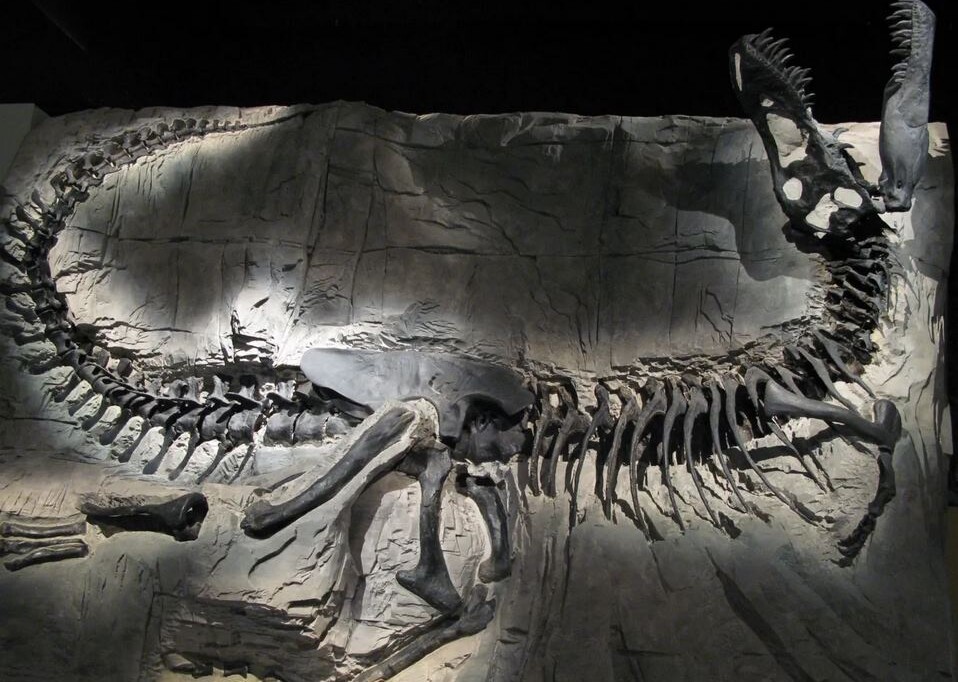New Discoveries in Paleontology: Uncovering Misidentified Dinosaurs
2025-07-02T13:00:30Z

Paleontology is poised to enter a promising new era of discovery, one that is marked by the correction of numerous misidentifications made in previous decades. This exciting development was exemplified by the revelation of a newly classified dinosaur species, affectionately named the “Dragon Prince of Mongolia.” This small tyrannosaurid provides important insights into the early evolution of its lineage.
Remarkably, this dinosaur had been sitting unnoticed in storage at the Mongolian Academy of Sciences since the 1970s, initially misidentified as an Alectrosaurus. The lead author of the paper detailing this new species, Professor Darla Zelenitsky from the University of Calgary, believes that many similar discoveries are lurking in museum collections worldwide, simply awaiting recognition.
Professor Zelenitsky noted in an interview with AFP, “It is quite possible that discoveries like this are sitting in other museums that just have not been recognized.” This statement underscores the potential for a renaissance in paleontological discoveries as researchers delve into previously overlooked specimens.
The identification of the new species, named Khankhuuluu mongoliensis, or the Dragon Prince of Mongolia, can be attributed to Ph.D. student Jared Voris. Voris discovered the two partially-complete fossil skeletons in the museum’s drawers and soon recognized inconsistencies in the labeling. The title “prince” rather than “rex” (king) reflects the dinosaur's smaller and more agile build. Weighing roughly the same as a show-jumping horse, K. mongoliensis illustrates an earlier period of Tyrannosaurid evolution, as well as a diversification that indicates a link between North America and Eurasia during its existence.
Living approximately 86 million years ago, K. mongoliensis was about one-eighth the size of its more famous relative, Tyrannosaurus rex. It navigated a landscape dominated by larger predatory theropods. Professor Zelenitsky described the traditional understanding of T. rex as “really messy,” emphasizing the confusion created by missing evolutionary links between dinosaur populations in Asia and North America. The new species acts as a pivotal link in clarifying how Tyrannosaurids evolved across both continents.
During the Cretaceous period, the Earth's continents were largely configured as they are today. A land bridge connecting Asia and North America via the Bering Strait allowed early Tyrannosaurids to migrate into North America, where they began to diversify. K. mongoliensis, or possibly a close relative, could have been among those that made the journey. After diversification, some Tyrannosaurids migrated back to Asia, resulting in two distinct subgroups. One subgroup comprised larger species, like Tarbosaurus bataar, while the other featured smaller varieties, such as the diminutive “Pinocchio rex,” which measured around the same size as K. mongoliensis.
Eventually, one lineage of the larger group crossed back into North America and, over millions of years, evolved into Tyrannosaurus rex, recognized as one of the largest land predators to have ever existed.
In addition to these exciting findings, paleontologists are also uncovering more examples of mislabeling in the field. A recent statement from the Natural History Museum of London revealed that a new species of dinosaur, once thought to be a Nanosaurus, was actually a new discovery after meticulous study. Initially acquired as a Nanosaurus, the fossilized specimen was eventually reclassified as Enigmacursor, meaning “mystery runner.”
This specimen, discovered on private land and auctioned as a Nanosaurus—a dinosaur first identified in 1877 and poorly defined—was found to be inadequate for proper classification. Professor Susannah Maidment, who co-led the investigation into Enigmacursor, elaborated, “It just goes to show how much paleontology has changed in the past 150 years.” She noted that when Nanosaurus was named, the limited number of known dinosaurs meant that its fossil characteristics seemed unique. Now, with hundreds of small dinosaurs cataloged globally, the fossils of Nanosaurus are not useful for accurate classification.
Living during the Late Jurassic period, between 152 and 145 million years ago, Enigmacursor thrived on floodplains and sandy riverbanks, relying on its speed to escape larger predators and catch prey. Its species name, mollyborthwickae, honors the generous donor who made the museum’s acquisition of the fossil possible.
These recent discoveries not only shed light on misclassification in the field of paleontology but also highlight the importance of revisiting museum collections, where many potential breakthroughs await.
 Hana Takahashi
Hana Takahashi
Source of the news: Good News Network